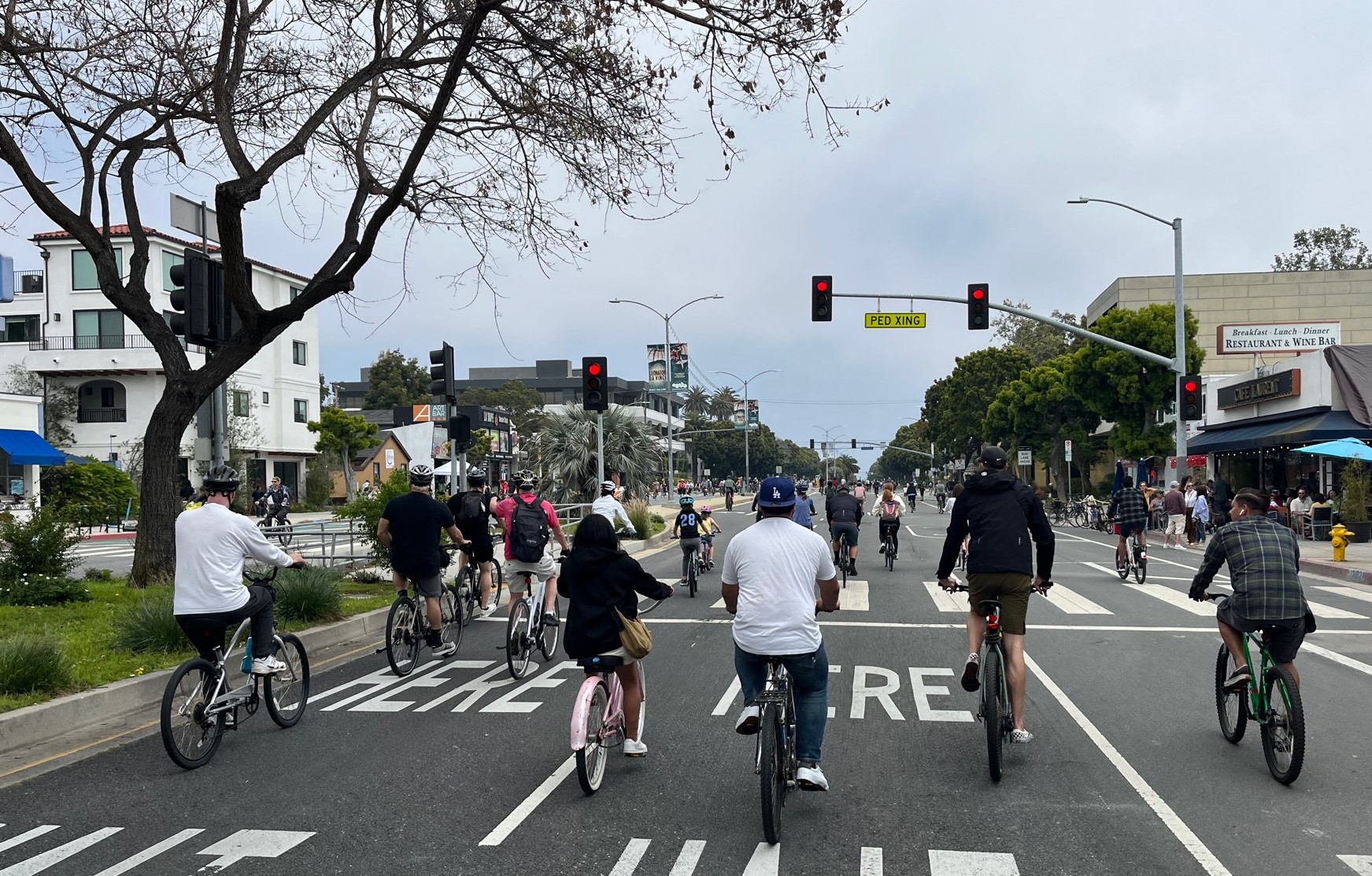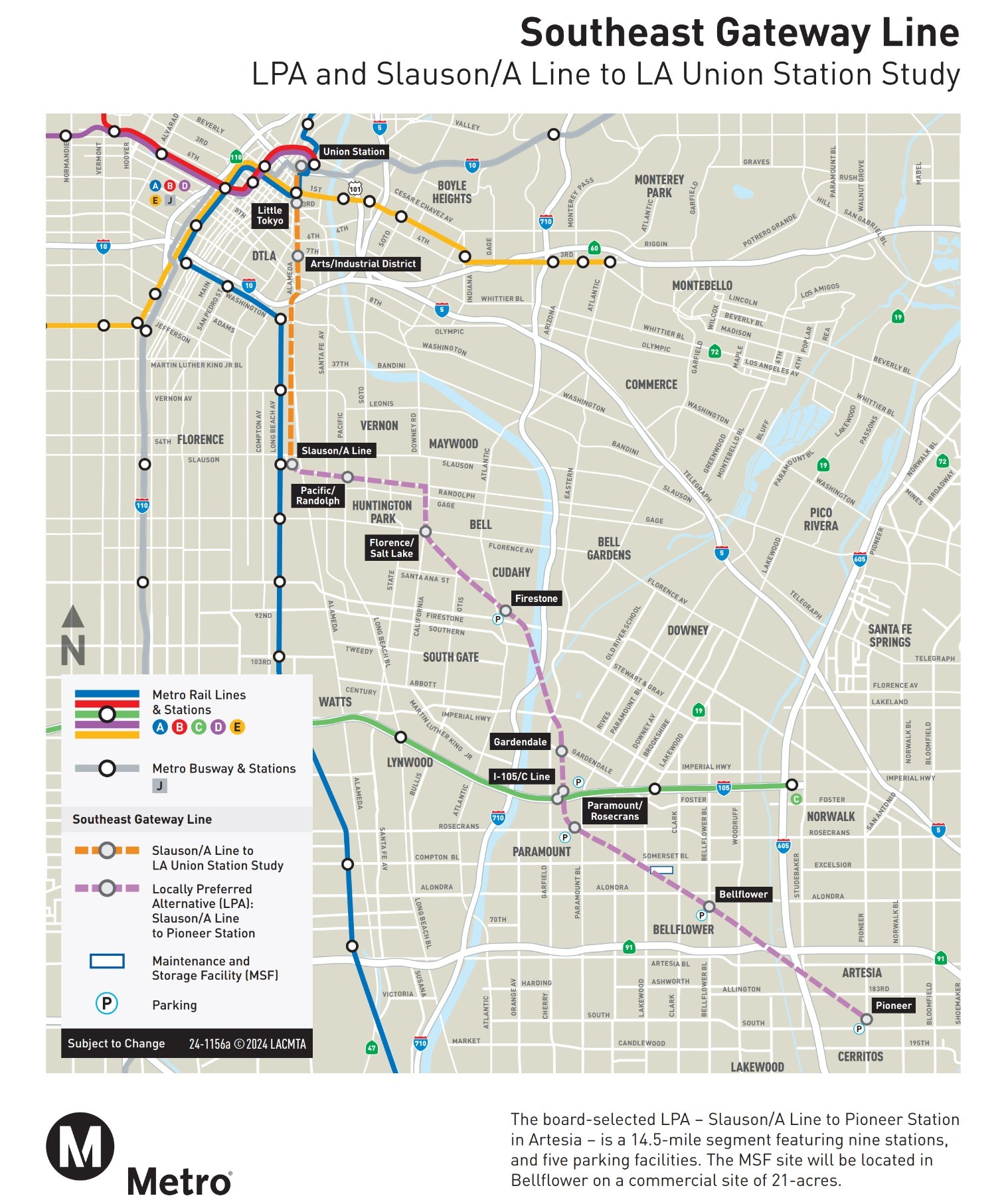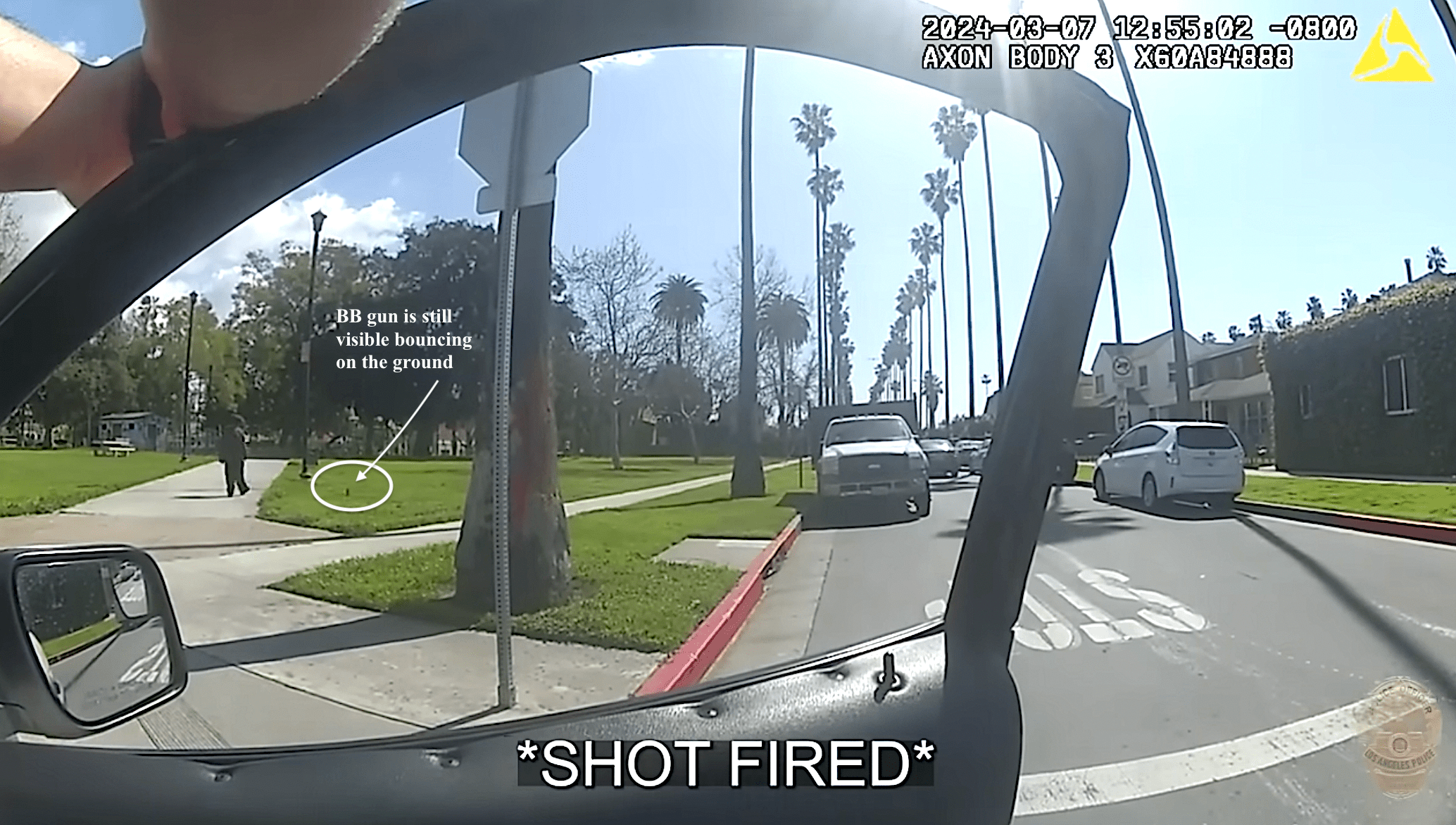Gov. Jerry Brown Asks Legislature for $176.6 Million to Expedite Lead Cleanup around Exide Plant
5:29 PM PST on February 17, 2016
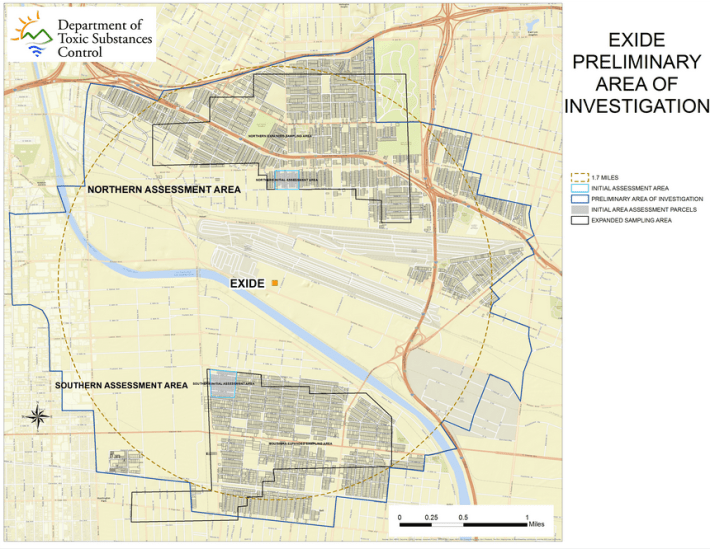
The office of Governor Jerry Brown sent out a press release earlier today announcing his intention to "pursue an additional appropriation" of $176.6 million for lead testing and clean-up in the 1.7-mile radius around Exide Technologies' now-shuttered lead-acid battery recycling facility in Vernon (seen above).
The major allotment of funds -- to be comprised, in part, of a loan from the General Fund -- would allow for the Department of Toxic Substances Control (DTSC) to pick up the pace of remediation in the surrounding communities while the state "vigorously pursue[d] Exide and other potential responsible parties to recover the costs of this cleanup."
Questions about the pace and scope of what could potentially be the largest toxic cleanup of its kind in state history have been popular topics with a number of news outlets lately. The rapid response to the methane gas leak at Porter Ranch -- including the effort to relocate families until the leak could be plugged -- contrasted dramatically with the decades of inaction with which state and local agencies met working-class immigrant communities' complaints about Exide's toxic emissions and violations.
The buzz around that discrepancy, DTSC Director Barbara Lee reassured reporters in a press call this afternoon, was not the reason that the governor was taking this rather major step now.
"One does not walk into the governor's office and say, 'I'd like $176 million'" without having done lots of careful background work on a proposal, she said.
DTSC, she continued, had spent a few months assessing the costs incurred thus far in the cleanup process, estimating how many of the 10,000 properties within the 1.7-mile radius of the plant might need remediation, and, in response to community demands for economic investment in the area, calculating how funds could best be used to both benefit the local economy and secure a cleaner future for all.
If made available quickly, Lee said, the funds would allow for 8500 properties to be tested within the next year (this is in addition to the funds already available to test the other 1500 properties). And they would allow for the cleanup of the 2500 residences, schools, parks, and daycare centers DTSC estimated could be contaminated enough to warrant remediation. Five of the seven parks and 16 of the 26 schools that fall within the 1.7-mile radius have been tested so far; the remainder should be tested later this spring. Parkways -- the strips of grass between the sidewalk and the curb -- unfortunately will not be tested as part of this effort. The priority, Lee reiterated, was to identify and remediate the areas children and pregnant women were most likely to come into contact with contaminated soil.
DTSC would also use the funds to do capacity building, workforce development, and job skills training, Lee continued, to be able to involve as many local businesses and community members in the cleanup process as possible. Putting dollars back into the community by training residents to help restore and revitalize the communities they live in, she said, was a primary objective.
Finally, Lee said, via the Hazardous Waste Reduction Initiative, DTSC would also be looking at the lead-acid batteries themselves to see how the manufacturing and handling of the batteries could be improved to lessen workers' exposure to lead. Similarly, she continued, DTSC would also look at how the life-cycle of the batteries could be improved as well as potential alternatives that would make them safer altogether. Should the analysis result in lead batteries being identified as a "Priority Product" under the Safer Consumer Products program, manufacturers would be required evaluate the product's health impacts and consider ways to reduce them.
"It's very forward-looking" Lee said of the plan.
Given that Exide continues to deny responsibility for lead contamination in the surrounding communities in order to avoid having to pay testing and cleanup costs, however, some of the funds secured will be dedicated to identifying the source of the lead dust found on area properties. [Identifying the source of lead is challenging when dealing with secondary smelters; see my discussion of how that works and Exide's self-exonerating study, here.]
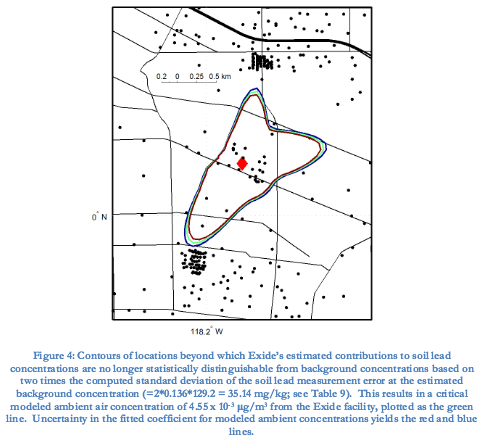
Lee said that the DTSC had been consulting regularly with the U.S. Environmental Protection Agency about logistics of such massive cleanups and things that the DTSC would need to make sure to take into consideration.
Even with that help, it is hard to balance such a massive scale with the very real legwork that needs to be done on the ground in working-class immigrant communities. Many residents in the area are still under- or misinformed about Exide and the impacts its emissions could have on their health; others may know nothing about the existence of Exide at all.
Sending out notices by mail generally doesn't work. And if the people doing the door-knocking to inform them about potential health risks or opportunities to have their yards tested for lead don't know how to engage them properly, then that method won't be much use, either.
Ana Mascareñas, Assistant Director of Environmental Justice at DTSC, said that DTSC was currently partnering with community-based organizations on two pilot projects to do local engagement. Should those prove successful, she said, they would look to partner with more local organizations in order to expand their efforts and scale up their outreach. They are also considering setting up a central community resource center as well as being involved in more local events like health fairs in order to be able to do more blood-lead testing and other screenings.
With regard to health issues, there is no plan as yet to do a systematic study of the impact of Exide's toxic emissions on the community. It is not something they have excluded from consideration, I was told by Lee during the press call, who said that they regularly consulted with the Department of Public Health and other health agencies. But their current efforts were directed at prioritizing ensuring cleanups were underway.
The appropriation of these funds, Lee concluded in her opening remarks to reporters, shows how important this case is to Governor Brown.
Those that called for Exide to be shut down years before Brown even came into office in 2011 might beg to differ on that point. And young activists from East Yard Communities from Environmental Justice are not so sure that Brown's proposal to expedite the process by exempting it from the California Environmental Quality Act is wise, fearing it could lead to an incomplete or even harmful cleanup down the line. But they are pleased that the plan responds to their demands to see economic empowerment and revitalization be tied to environmental restoration.
All that remains is for the money to actually be disbursed. The funds, Lee told reporters, are for this fiscal year, and could be made available in their entirety before the next fiscal year begins.
* * *
We have done extensive coverage on Exide's confounding and often confusing case here at SBLA. If you would like to know more about the draft environmental impact report regarding Exide's closure plan, please click here. If you'd like to know more about the closure process, the lead testing process and challenge of linking Exide to the lead contamination, please click here. If you'd like to learn about why the community is adamant that state agencies be held accountable for allowing Exide to commit as many environmental crimes as it did, please see here, here, here, and here. If you'd like to know more about why the plant was shut down, please see here, here, here, here, here, and here.
Sahra is Communities Editor for Streetsblog L.A., covering the intersection of mobility with race, class, history, representation, policing, housing, health, culture, community, and access to the public space in Boyle Heights and South Central Los Angeles.
Stay in touch
Sign up for our free newsletter
More from Streetsblog Los Angeles
This Week In Livable Streets
Active Streets Mission-to-Mission, LAPD reports on its use of force in 2023, Pasadena Transit plans, Metro subway construction, and more
Eyes on the Street: Santa Monica Connection from E Line Bike Path to Downtown Is Almost Complete
“Always be closing gaps in your bikeway network.”
CicLAvia Opens Venice Boulevard – Open Thread
CicLAvia opened six miles of Venice Boulevard - from Culver City Station to Venice Beach
LAPD shoots, strikes unarmed unhoused man as he walks away from them at Chesterfield Square Park
The newly released briefing video depicts Robles as non-compliant and claims officer Gomez-Magallanes shot him for pointing a weapon at officers, but body cam footage shows Gomez-Magallanes continued to fire at - and ultimately hit - Robles after he turned away and tossed the BB gun aside.


